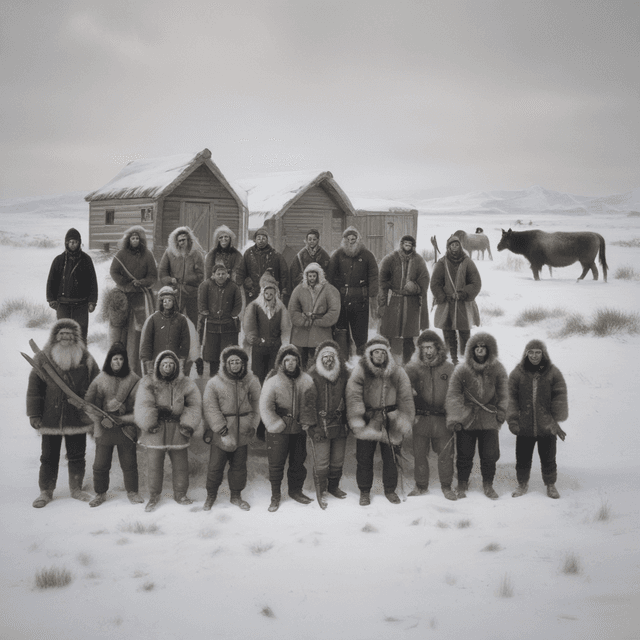
| Role | Prominent stewards of northern lands and resources |
| People | Inuit |
| Region | Arctic |
| History | Thousands of years of culture and tradition |
| Lifestyle | Maintained traditional way of life |
| Participation | Involved in political and economic affairs of the circumpolar world |
The Inuit are the indigenous peoples of the Arctic regions, occupying lands from eastern Siberia across northern North America to Greenland. With a history spanning over 4,000 years, the Inuit have developed a rich culture, language, and way of life deeply adapted to the harsh Arctic environment.
The ancestors of the modern Inuit, known as the Paleo-Eskimo peoples, are believed to have migrated from Siberia to North America thousands of years ago, gradually spreading across the Arctic regions. These early groups developed sophisticated hunting, fishing, and survival techniques to thrive in the extreme northern climate.
Over successive waves of migration and cultural evolution, the Inuit emerged as a distinct ethnolinguistic group, sharing a common Inuit language and set of cultural practices. By the time of sustained European contact in the 11th century, the Inuit had established a continuous presence across the Canadian Arctic Archipelago, Greenland, and parts of Alaska and eastern Siberia.
The Inuit's way of life has been deeply shaped by the demands of surviving in the Arctic. They have developed a highly specialized material culture, with expertise in crafting essential items from available resources like seal, whale, and caribou.
Inuit society is traditionally organized around extended family groups, or "camps", that cooperate in hunting, fishing, and other subsistence activities. The camp leader, usually the most skilled and experienced hunter, plays a central role in decision-making and resource allocation. Spiritual beliefs, including shamanism and reverence for nature spirits, are also integral to Inuit culture.
Hunting and fishing have always been the foundation of the Inuit economy. Techniques like dog sled transportation, harpoon fishing, and the construction of sod houses and igloos have allowed them to thrive in the harsh northern climate. The Inuit have also developed rich artistic traditions, including intricate carvings, weaving, and storytelling.
The arrival of European explorers and settlers in the 11th century CE had a significant, but relatively gradual, impact on Inuit society and culture. Norse colonists in Greenland and Vinland established trade relationships with local Inuit groups, leading to the exchange of goods, technologies, and ideas.
However, the Inuit were generally able to maintain their autonomy and traditional way of life, resisting attempts at conversion or displacement by the newcomers. Inuit populations even grew in some areas as they incorporated elements of European material culture, such as firearms, into their subsistence practices.
It was not until the 18th and 19th centuries, with the arrival of whalers, fur traders, and Christian missionaries, that Inuit society faced more serious disruption. Even then, many Inuit communities were able to adapt and maintain their cultural identity, while also selectively incorporating aspects of European technology and economic activities.
Today, the Inuit continue to play a prominent role in the political, economic, and cultural affairs of the circumpolar North. They have secured greater autonomy and self-governance over their traditional territories, particularly in Canada, Greenland, and parts of Russia. Inuit organizations actively participate in regional and international bodies, advocating for their environmental stewardship, resource rights, and cultural preservation.
Inuit communities have also embraced modern technologies and economic opportunities, while still maintaining strong connections to their traditional lifeways. Hunting, fishing, and herding remain central to the Inuit economy, supplemented by participation in the service, resource, and knowledge-based sectors.
The Inuit's intimate knowledge of the Arctic environment has made them invaluable partners in scientific research and environmental management initiatives. They continue to be recognized as the most skilled and experienced navigators and survivalists in the northern latitudes.
Despite the challenges of adapting to a rapidly changing Arctic, the Inuit remain a vibrant, resilient, and influential presence in the region. Their cultural traditions, language, and connection to the land endure as a testament to the ingenuity and tenacity of these indigenous Arctic peoples.